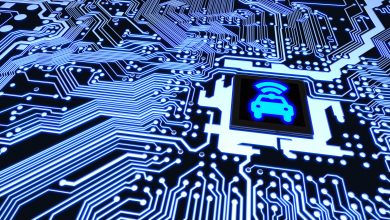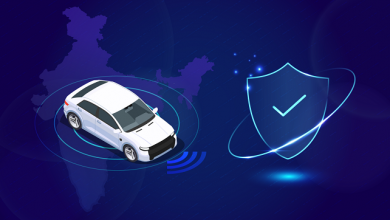When Cars go beyond driving

Amidst concerns of safety and security, there is no question that technology can bring many benefits to transportation. Automated processes and intelligent controls can reduce delays and human error, preserve resources, improve connectivity, and enhance customer experience. As populations continue to grow and put pressure on the transportation sector to ensure operational efficiency, safety and security increases, technologies such as the Internet of Things (IoT) can helping build the next generation of transportation.
The convergence of IoT and in-vehicle technologies, like remote diagnostics, on-board GPS, collision avoidance systems and 4G LTE Wi-Fi hotspots, can pave the way for new and exciting opportunities in the transport industry. Intelligent connections between datacenters and wheels are making sure that “Connected Transportation (read: Connected Cars)” as a concept, is no longer science fiction – it is real today and can provide people with a secure, safe, reliable and enriched driving experience.
Statistics indicate that the Connected Car market worldwide will likely reach $155 billion by 2022, while 75 percent of the estimated 92 million cars shipped globally in 2020 will be built with internet connectivity. As the market grows, the biggest opportunity comes from the ongoing services that can be offered and the ongoing revenue that subscriptions to these services can create.
The concept of Connected Cars is reality today in many European countries, thanks to the Internet of Things. An enhanced driving experience and increased safety are some of the key benefits of these services.
While there is evidence that the adoption rate for connected, services is growing (willingness to pay for connected services went from 21 percent in 2014 to 32 percent in 2015), many consumers still have concerns over the security of these vehicles. However, security is not solely a connected transport issue – it is an inherent concern with IoT, given the copious amount of data collected and shared between devices.
When it comes to IoT, people fear not knowing what devices are doing and what they are actually capable of doing. The reality is that today’s networks were not built for the number of devices coming online. As networks evolve to better meet the needs of IoT and connected transport, automakers must take extra measures to ensure appropriate levels of connectivity at each step of the vehicle’s lifecycle.
Security must be a top priority – from the design of the vehicle, to the time the driver takes the wheel, and beyond – to improve adoption rates and drive profits. The key to securing the Connected Car’s vast, potential “attack surface” is enabling the right levels of connectivity at the right times. In addition to knowing when connectivity should be on or off, it’s also critical to know what a vehicle should be allowed to do with that connectivity at different stages throughout its lifecycle.
Automating this knowledge and ensuring proper connectivity to match each vehicle state is crucial to end-to-end security. It also eliminates the need to manually track and monitor connectivity. Automakers should partner with security experts and invest in IoT connectivity management platforms that are capable of automating how and when a vehicle connects, and what the vehicle is allowed to do with that connection.
Automated connectivity management platforms enable manufacturers to identify what vehicles are allowed to do with their connectivity. If they do anything else, the platform can detect that anomalous behavior and automatically shut off the connectivity, preventing illicit activity that could compromise the vehicle’s security and safety.
While IoT platforms and partnerships can help assuage security concerns and position automakers for success, there is an entire ecosystem of responsibility for the Connected Car. With new devices, connections and data points arising every day, no single party is 100-percent responsible for Connected Car security. Everyone – from the OEM, to the dealer, to the bank that enables automated payments, to the developers of aftermarket services – must do their part to keep cars safe, consumers happy and secure.
As the opportunities for new subscription-based services and connections with external networks continue to grow, security will remain top of mind. In the near future (5-7 years in India), we will see smart drive-through, in which fast food restaurants can connect with customers’ vehicles and use GPS coordinates to predict ETAs for even faster, fresher service.
We will see gas pumps equipped with sensors that automate payments upon a vehicle’s arrival, without the need to swipe a credit card. We already see cars connecting with social gaming platforms with in-app purchases to entertain passengers on long road trips. Everything from entertainment, to automated payments, to micro-transactions that take place between the vehicle and other infrastructures must be secured so that they are widely adopted, and in turn, drive profits for OEMs and aftermarket providers alike.
Early adopters
Leading automotive OEMs worldwide are leveraging IoT solutions from Cisco Jasper to easily manage millions of connected vehicles on a global scale. Automate provisioning and operations, maximize up-time with real-time monitoring and diagnostics, and control costs with split billing and rapid roll out of new services.
Honda is leveraging IoT solutions from Cisco Jasper and Bright Box to deliver the MyHonda Connected Car platform, which provides a suite of powerful services that enhances the driving experience. MyHonda utilizes telematics solutions from Bright Box, powered by the Cisco Jasper Control Center automated IoT connectivity management platform, to deliver a variety of connected services that increase driver safety, simplify vehicle ownership, and enable new experiences for drivers. Honda has launched these Connected Car services across all European countries.
Honda drivers will benefit from the following IoT-connected services through the MyHonda Connected Car platform:
- Vehicle information and diagnostics – Drivers have easy access to critical vehicle information via the MyHonda app, and diagnostic information is sent in real time to track the health of their vehicle.
- Simple scheduling of maintenance – Drivers are alerted when maintenance is needed, and can easily schedule appointments with the push of a button.
- GPS tracking for location-based services – Drivers are provided with information on their trips, push notifications to alert them when speeding, the ability to locate open parking spaces, and more.
Cisco Jasper Control Center is the global IoT platform of choice for 23 of the world’s largest auto manufacturers. These OEMs utilize Control Center to transform vehicles into dynamic hubs capable of delivering a variety of services that provide new, ongoing revenue channels for both them and their ecosystem partners. Bright Box uses Control Center to decrease operational costs and guarantee the connectivity and responsiveness needed for Honda’s always-on IoT services.
Honda experiences the following benefits of the Bright Box and Cisco Jasper IoT solution:
- Best possible customer experience – Honda uses Cisco Jasper Control Center’s automated rules and APIs to continuously monitor and proactively service connected vehicles for pan-European drivers.
- Optimized telematics – Bright Box is a market leading telematics service provider that is already using Control Center on four other continents with six OEMs. Bright Box has partnered with Post Luxembourg, who provides the connectivity for Honda’s pan-European project on Control Center.
- Global scale – Control Center enabled Bright Box to easily extend the automated connectivity management for Honda’s vehicles across six European countries today. And Cisco Jasper’s partnerships with more than 50 service providers, which manage IoT devices across more than 550 mobile networks worldwide, will enable Honda to expand their services globally as needed.
By using Cisco Jasper Control Center in Connected Car projects players like Honda and other automotive OEMs have managed to reduce operating costs and increases service quality for customers. Today’s most innovative auto makers are leveraging IoT to provide new services that enhance the driving experience for their customers. The MyHonda connected services, Honda is a demonstration of building a better driving future where drivers will continue to benefit from new levels of safety and convenience.



